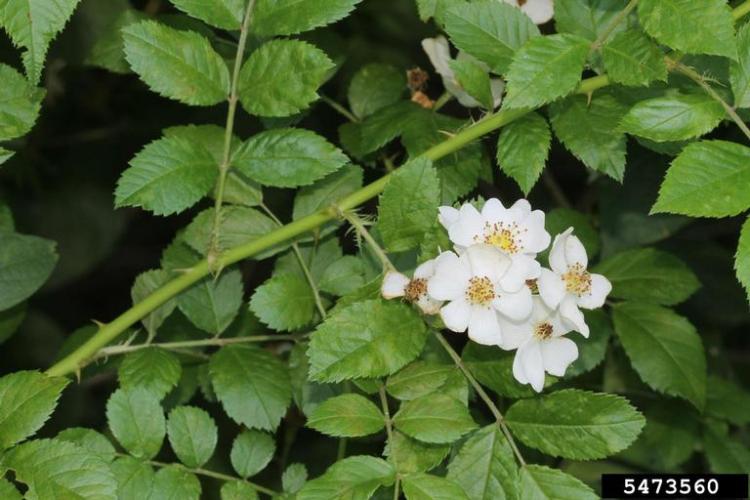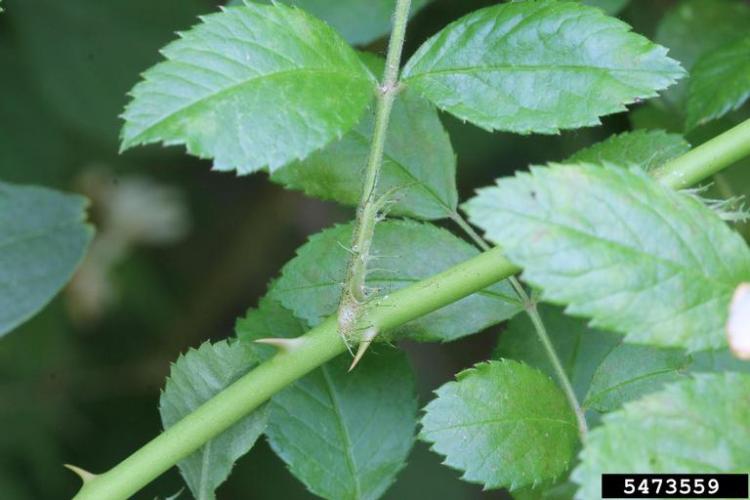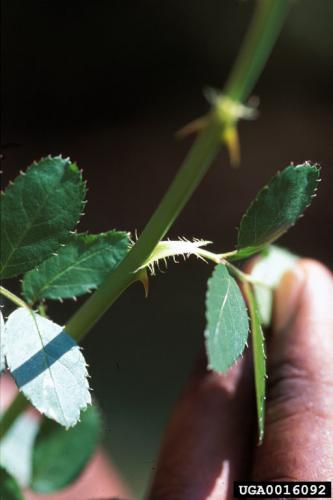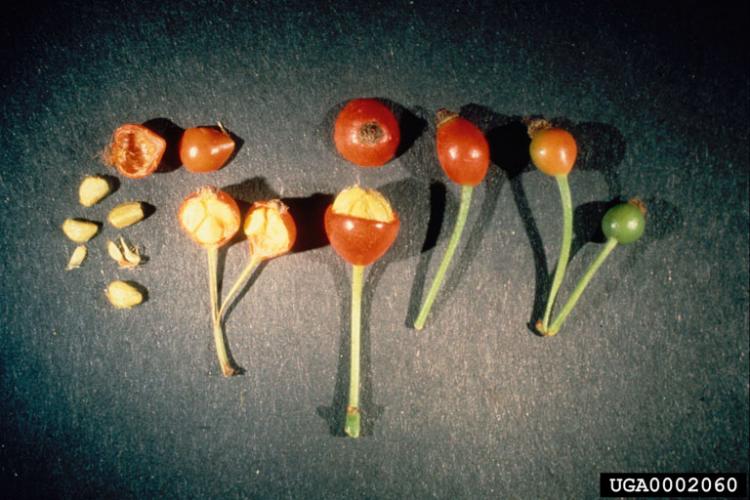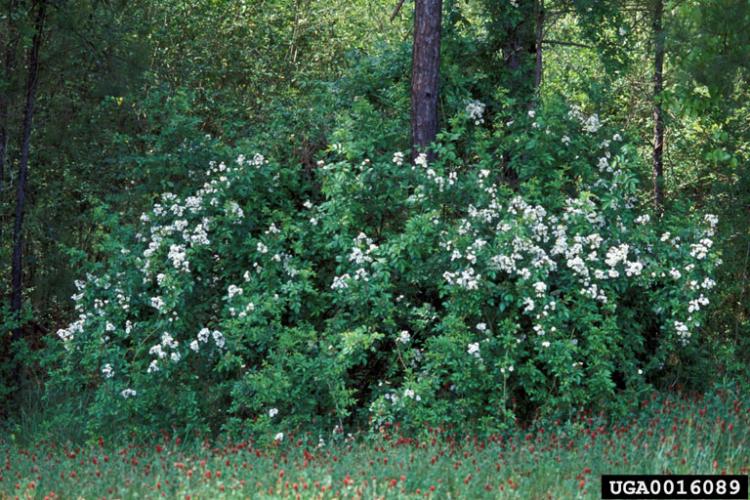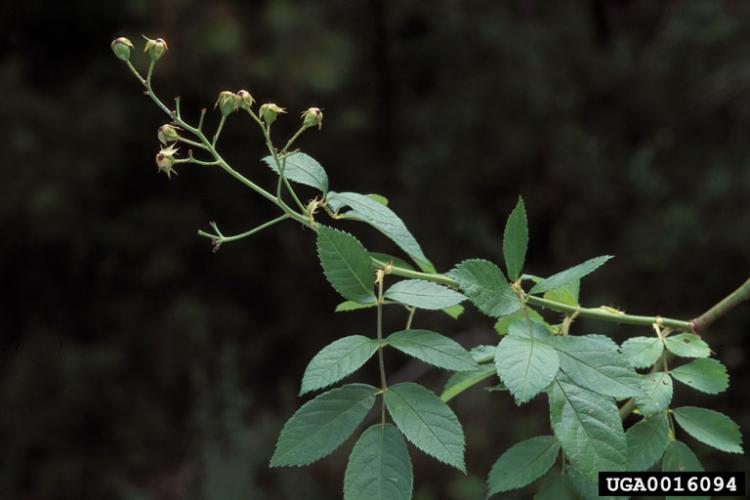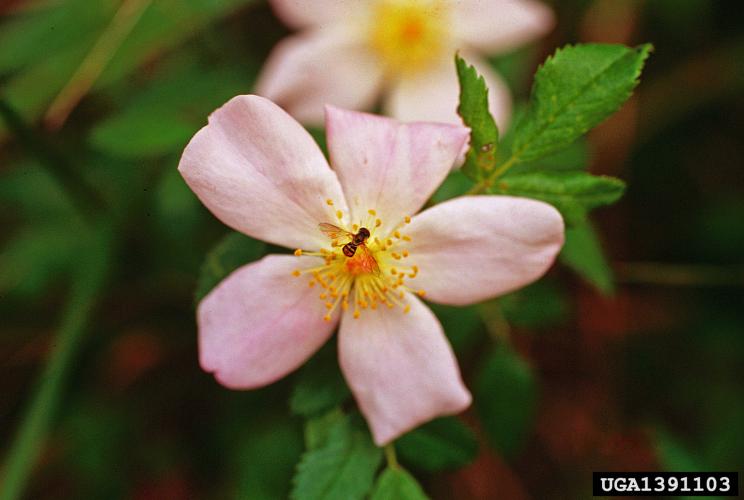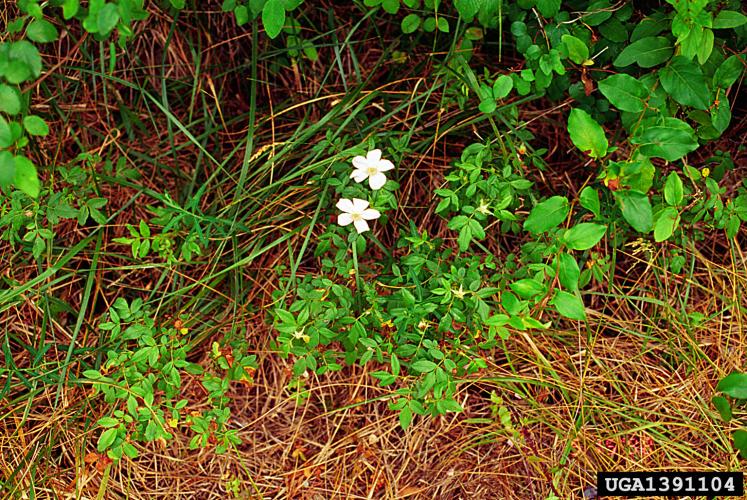Multiflora Rose
Identification
Appearance
Rosa multiflora is a multistemmed, thorny, perennial shrub that grows up to 15 feet tall. The stems are green to red arching canes which are round in cross-section and have stiff, curved thorns.
Foliage
Leaves are pinnately compound with 7-9 leaflets. Leaflets are oblong, 1-1.5 inches long and have serrated edges. The fringed petioles of Rosa multiflora usually distinguish it from most other rose species.
Flowers
Small, white to pinkish, 5-petaled flowers occur abundantly in clusters on the plant in the spring.
Fruit
Fruit are small, red rose hips that remain on the plant throughout the winter. Birds and other wildlife eat the fruit and disperse the seeds.
Biology
This is considered a watch list species.
Origin
The plant was originally brought to the US as rootstock for ornamental roses in the 1800s, then promoted as “living fences” in the 1930s, and encouraged as wildlife enhancement in the 60s.
habitat
Man-made or disturbed sites, meadows and fields, shores of rivers or lakes, shrublands or thickets
Life Cycle
Multiflora rose reproduces primarily by seed, a single plant can carry up to 1 million in a year. The seeds remain viable in the soil for up to 20 years. These perennial plants will also sprout from existing roots season after season. Leaves appear very early in spring, and flowers begin to bloom in June. Fruits develop in late summer and remain on the plant through winter. Multiflora rose can also reproduce by layering – when stem tips touch the ground and take root.
ecological threat
- Multiflora rose (Rosa multiflora) can form impenetrable thickets that exclude native plant species.
- Birds eat the fruits and disperse the seeds which are still viable after passing through the digestive tract.
- Arching canes that reach the ground can take root and form new plants.
- This plant has a wide tolerance of soil, moisture, and light conditions. It has the ability to thrive in dense woods, open fields, prairies, pastures, and is readily found along stream banks and roadsides.
- Seed bank can remain viable for 10-20 years creating the need for a long-term management plan.
Vermont Distribution
Citations
photo credit
Multiflora Rose flower, 5473560, Rob Routledge, Sault College, Bugwood.org
Multiflora Rose leaf and stem, 5473559, Rob Routledge, Sault College, Bugwood.org
Hypanthia or hips, 0002060, James W. Amrine Jr., West Virginia University, Bugwood.org
Flowering plant in May, 0016089, James H. Miller, USDA Forest Service, Bugwood.org
Bristled margins on petiole, 0016092, James H. Miller, USDA Forest Service, Bugwood.org
Immature fruit (hips), 0016094, James H. Miller & Ted Bodner, Southern Weed Science Society, Bugwood.org
Carolina rose flowers, 1391103 & 1391104, John D. Byrd, Mississippi State University, Bugwood.org
information credit
Center for Invasive Species and Forest Health, Multiflora rose
